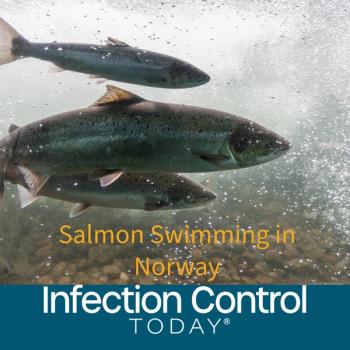
Q&A: Reopening After COVID-19: Proceed With Caution
Kevin Kavangh, MD: “What worries me the most about reopening is that people going to say, ‘Oh, it’s over with’ and not do any sort of protection, whether it’s social distancing, wearing masks, not gathering in crowds. I really think that people will think, ‘Well, we got this beat.’”
Kevin Kavanagh, MD, is the board chairman of Health Watch USAsm, a patient advocacy group. Kavanagh is also a member of Infection Control Today®’s Editorial Advisory Board. Kavanagh saw the threat posed by COVID-19
Infection Control Today®: What recent developments about the COVID-19 crisis are you keeping an eye on these days, Doctor?
Kevin Kavanagh, MD: Well, right now I’m very concerned and interested in the public acceptance of guidance on how not to become infected. And I think with our opening up of the economy that’s of paramount importance.
ICT®: Some experts think that cloth masks are basically useless against COVID-19. I take it that you don’t quite agree with that?
Kavanagh: Well, it depends on the context of the usage. For the healthcare worker or the infection preventionist who want to prevent themselves from getting COVID-19, a cloth mask offers little protection. You definitely would need an N95 mask, you would need goggles, gowns and full gear. And this is what is of paramount importance: to protect our healthcare workers. But when you talk about the public, the concern here we have is of asymptomatic carriers, transmitting this virus to other people. And in this context, cloth masks may be very beneficial. It is known that up to 50% of the general population that has COVID 19 are asymptomatic carriers, and that they may not know they’re carrying the virus and they can spread it to others. And research indicates that cloth masks are effective in preventing that spread. So, it doesn’t protect the wearer of the mask as much as it protects other people.
ICT®: But you’re aware that not everybody agrees with you on that, right?
Kavanagh: Well, yes, but there have been a number of articles which have come out recently, which does point to the necessity of the public wearing masks. For example, when you look at the spread of a cough or a sneeze, new articles-one which came out in JAMA Network-indicate that a sneeze can spread droplets 23 to 27 feet. A cough can spread droplets up to 9 feet. (And this was from researchers out of the Florida Atlantic University.) And they can linger in the air for 30 to 40 seconds. And so it is of paramount importance that we try to cut down on the spread. And that type of spread will not be stopped by just social distancing of 6 feet. Loud speech is another problem. This can aerosolized particles for 8 to 14 minutes. And research has shown that those particles can actually live in the air for up to 3 hours. So that cloth masks then become important in trying to prevent the person that’s projecting these particles. That’s kind of like a directional spread of those viruses directly into the mask. It will cut down on the spread. There has been some research that has indicated that under certain conditions that that spread can be cut down up to 90%. And there’s been some recent modeling which has shown that if the public wears masks-let’s say 80% of the public wears masks-that that in itself could help burn out this epidemic. And, of course, as infection preventionists are exposed to more and more patients, their chances of getting infected become greater and greater. So, it is a very good tactic to try to prevent infections in healthcare workers by just preventing the infections in the first place. It’s being active with educating the public on how not to acquire this virus.
ICT®: Cloth masks. If I take one of my old T-shirts and rip it and tie over my face like a bandana, does that count?
Kavanagh: Well, that would count but that would probably be a very low-level cloth mask. You’d want to have it several plies thick and of course the type of material will make a difference. But the CDC does have guidance on how to make these. So does John Hopkins. And if you go to the COVID-19 pages on the Health Watch USA.org
ICT®: So, if I’m an infection preventionist or a nurse or doctor or emergency room personnel, I’d rather see someone come in with a mask, even if it’s a cloth mask?
Kavanagh: That’s correct. And all patients I think whether they have COVID-19 or not, because again, with the asymptomatic carriage rate, you will not know whether or not they have it until you get a test. So, all patients coming into a facility should be given a mask, at least a surgical mask. If you don’t have those, use a cloth mask because again, there the idea isn’t so much to protect the patient. Although in a healthcare facility, you’d like to protect the patient, too. But it’s to prevent an asymptomatic carrier from spreading it to others. And in order to get any sort of protection through the mouth and nose of the wearer, you would need an N95 mask.
ICT®: I wasn’t going to ask you about this. We actually haven’t talked about this before. But you’ve mentioned Johns Hopkins several times and one of the members of our Editorial Advisory Board does work for Johns Hopkins but he’s too busy these days to talk to us or anybody else, much. How was it that Johns Hopkins has landed so in the middle of this? They’re the ones everybody looks at for data. Do you have any idea why Johns Hopkins-of all the healthcare institutions in the country-is so much a part of this?
Kavanagh: Well, they do have a very famous public health system, and public health arm of the university. So I think that’s important. But they also have stepped in to fill a void when there was a void of tracking this data. And my understanding is they use a number of different sources to comprise their data. And then they have a very good interactive display of world data and of data in the United States. I think that’s kind of what happened. And certainly that’s the data that I think is good to use. We also use the
ICT®: As you mentioned earlier, many states are reopening. What worries you most about reopening?
Kavanagh: Well, what worries me the most about reopening is that people going to say, “Oh, it’s over with” and not do any sort of protection, whether it’s social distancing, wearing masks, not gathering in crowds. I really think that people will think, “Well, we got this beat. So, we’re going to go out and have a good time over Memorial Day weekend.” And I think that is the most dangerous thing. It also worries me about states that are completely reopening, because some of the areas that are reopening, I think still pose dangers. Gyms, tattoo establishments, salons, and restaurants are also a problem. When it’s indoor dining, all of these types of services, I think we’re still in the infancy of knowing how to stop the spread in them. I think they’re higher risk than activities that you can do outdoors. Or when you’re sure you can have a very long distance between you and the other person. And so that is kind of my caveats. For me, I still like to do takeout or pick-up types of dining. And if I was going to dine at the restaurant, I would want to be doing social distancing outside with a dining table and having my food prepared and the servers wearing masks. But that’s still going to be higher risk than pick-up or having it delivered at home.
ICT®: Infection preventionists, sterile processing, hospital administrators, environmental services: Are their roles going to change now after COVID-19?
Kavanagh: Well, I think that they’re going to be more involved with community education. I think that they’ll be put more to the forefront of infection prevention. As we’ve discussed before, there are a number of recommendations for COVID-19 that you have to scratch your head and say, “Well, why aren’t we doing this for all dangerous pathogens?” And so, I think it’s going to place them more at the forefront of really a resource and expertise which is invaluable to the hospital facility. And I think that you’ll see infection preventionists starting to appear in nursing homes and being an integral part of that type of facility where all too often they were all but absent.
ICT®: Do you think this will happen by nursing homes just doing it on their own? Or by CDC mandate?
Kavanagh: Well, right now, CMS is mandating that the nursing home should have an infection preventionist that is able to handle the work there and be able to adequately prevent outbreaks. In other words, you have to have an infection preventionist that is adequate for the needs of the facility, as opposed to the old definition, which was just part-time, which by my interpretation could be one hour per year, which couldn’t begin to meet the needs of the facility. We may see some increase in infection preventionists input into nursing home care, and that is vitally needed.
ICT®: I’m going to ask you to look into your crystal ball. What do you see for Memorial Day weekend in 2021?
Kavanagh: I hope that we’re out playing beach ball, golf, having picnics and not having much of any restrictions. And that’s provided that we get a vaccine out to the general population. And I’m very hopeful with some of the initial steps that are being taken to hurry up the process. And this doesn’t mean they’re cutting corners, but they’re starting to manufacture vaccines before they even know if they work so that they can be used if in case they do become medically efficacious. And they’re also talking about using challenge trials, which could cut the process of seeing whether or not that vaccine works down to weeks, as opposed to many months or even a year. So those are very hopeful. And we should also remember we have over 100 companies working on this vaccine. There are a lot of shots that are going to be taken on court. And one of them I’m very hopeful will hit and that we’ll be able to gear up quite rapidly for distribution, and that we can determine the efficacy of the vaccine very quickly. So that’s what I’m hoping for. I hope a year from now-and this may be overly optimistic-but a year from now, I hope that we’ll start to have a vaccinated population with a safe and effective vaccine.
This interview was edited for clarity and length.
Newsletter
Stay prepared and protected with Infection Control Today's newsletter, delivering essential updates, best practices, and expert insights for infection preventionists.





